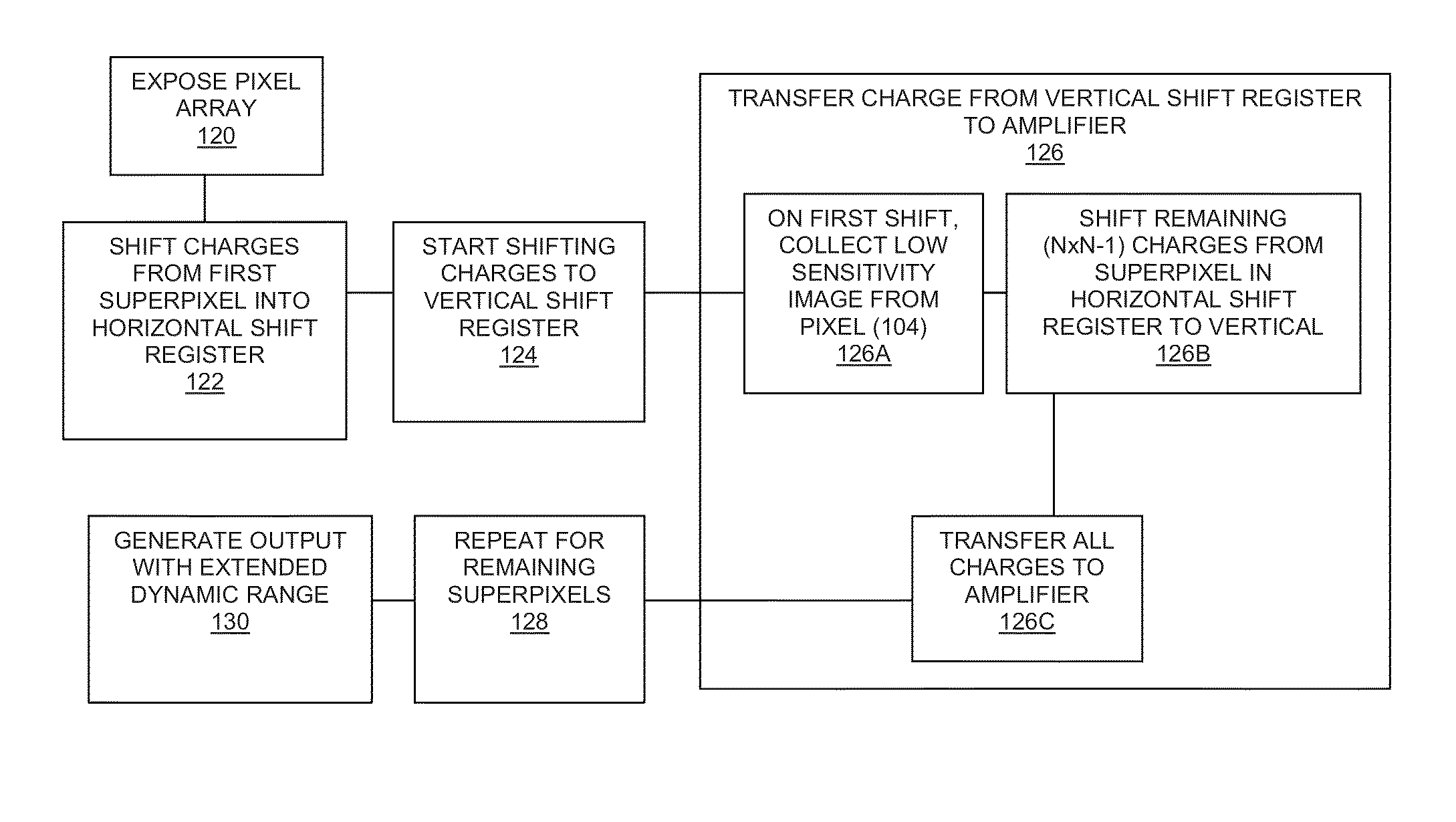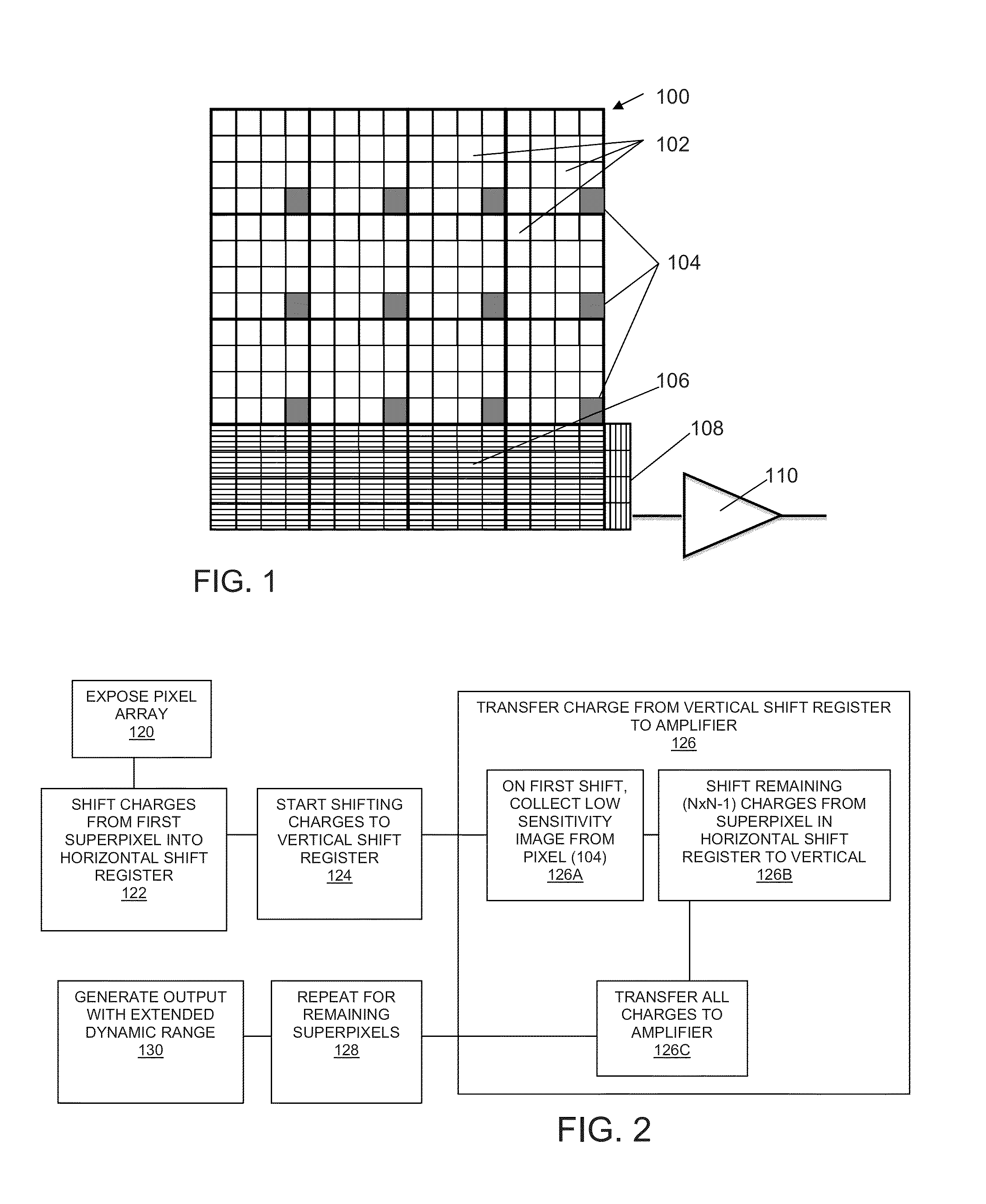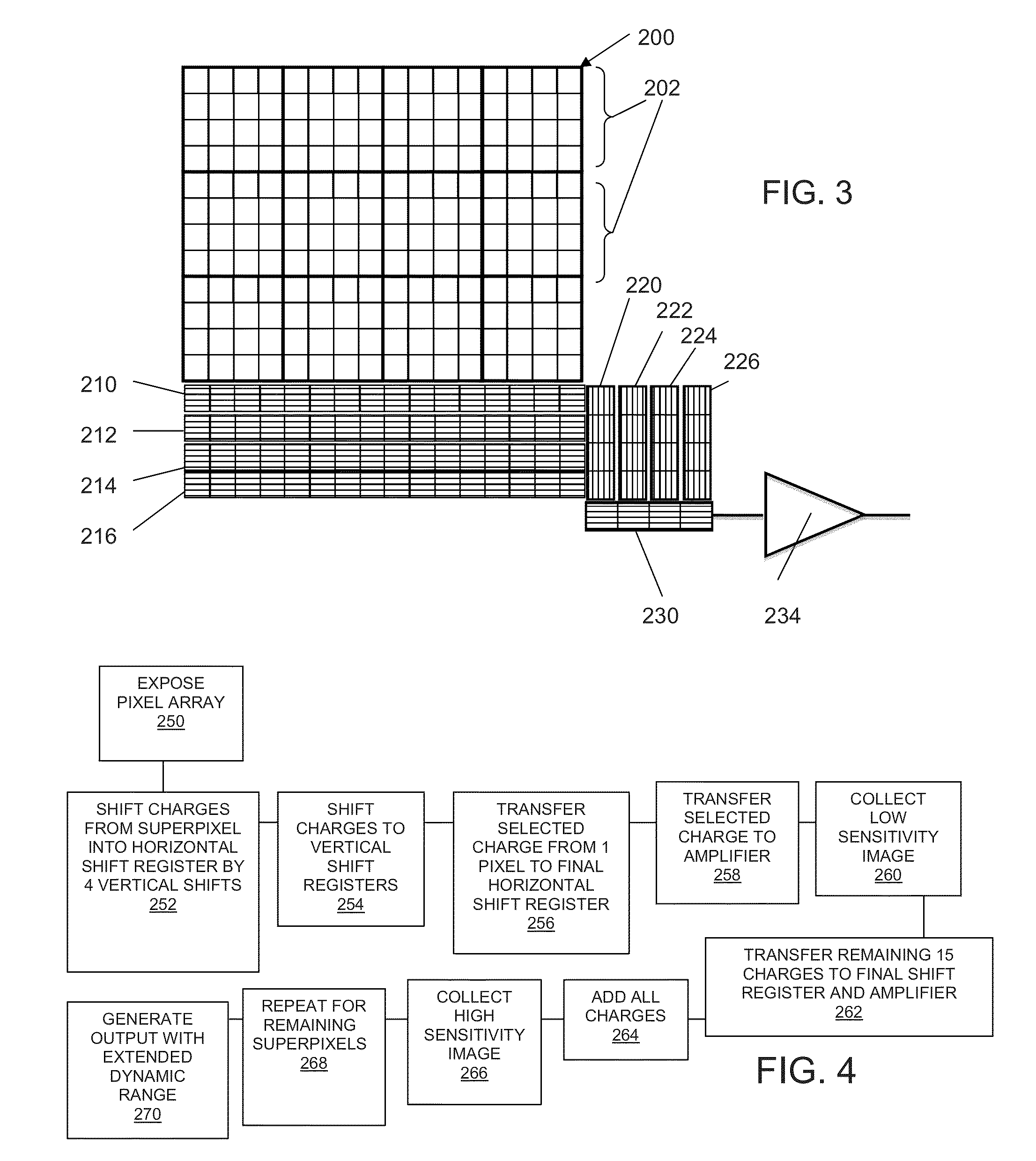Device and method for extending dynamic range in an image sensor
- Summary
- Abstract
- Description
- Claims
- Application Information
AI Technical Summary
Benefits of technology
Problems solved by technology
Method used
Image
Examples
Embodiment Construction
[0027]According to the present invention, photo-electrons generated by a CCD sensor are swept into shift registers in which charge summing can be performed. The variously on-chip binned exposures are then used to create a high dynamic-range image. An additional unique aspect is a custom output charge transfer register that allows read out of a binned image simultaneously with a sub-sampled, unbinned image.
[0028]A wide range of architectures may be used to perform on-chip binning to achieve simultaneous, high dynamic-range images, combined with greatly enhanced low-light sensitivity. Separate images, with different binnings can be used, or a CCD architecture can be used to simultaneously read out differently binned images. The exemplary embodiments described herein are not intended to be restrictive to any particular implementation. One skilled in the art will immediately recognize that the architectures incorporated in the examples described below may also be used for color CCDs by ...
PUM
 Login to View More
Login to View More Abstract
Description
Claims
Application Information
 Login to View More
Login to View More - R&D
- Intellectual Property
- Life Sciences
- Materials
- Tech Scout
- Unparalleled Data Quality
- Higher Quality Content
- 60% Fewer Hallucinations
Browse by: Latest US Patents, China's latest patents, Technical Efficacy Thesaurus, Application Domain, Technology Topic, Popular Technical Reports.
© 2025 PatSnap. All rights reserved.Legal|Privacy policy|Modern Slavery Act Transparency Statement|Sitemap|About US| Contact US: help@patsnap.com



